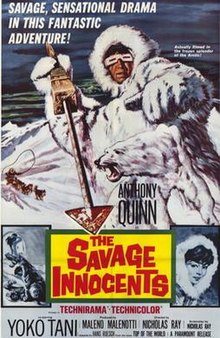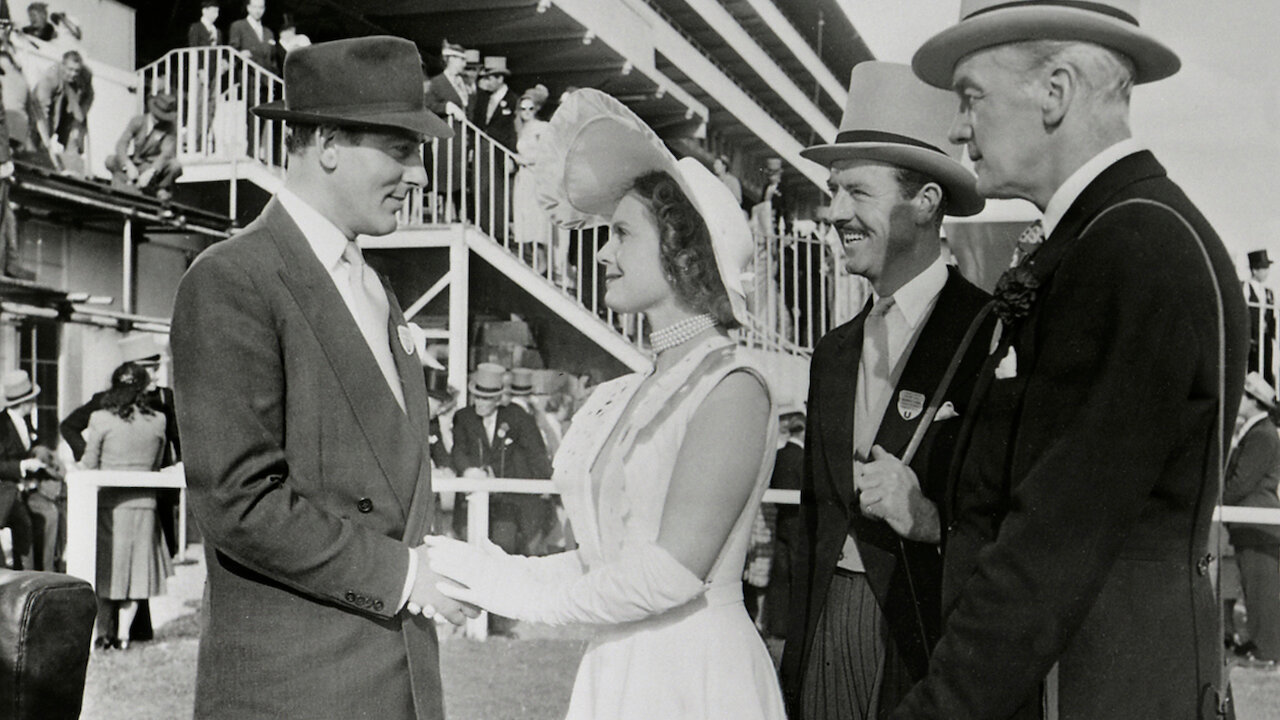The narrow potential audience of The Savage Innocents made it a risk for producer Maleno Malenotti so, to cut his chances of having a complete box-office failure on his hands, he decided to put a Hollywood "name" on the marquee - Anthony Quinn. This as an unfortunate move because the film is about "the savage innocents" - Eskimos. It is about their social and living habits: how they hunt, how they build, how they mate, dance, eat, fight, feel and their viewpoints on birth and death. This is quite fascinating and, if The Savage Innocents was an Omnimax presentation, it would be a memorable documentary....but the Eskimo himself is what would make this film special, not a white man playing the part of an Eskimo. Especially not a tall, Italian-American such as Quinn. The Eskimos were indeed a savage but innocent race of people and innocence cannot be feigned. Anthony Quinn couldn't pull it off and, unfortunately, that one flaw turns what would be an otherwise enjoyable docudrama into an pretentious Hollywood production.
The cinematography in The Savage Innocents is magnificent. It was filmed on location in northern Canada and Greenland and the second unit film crew captured the striking raw beauty of the arctic territory in sweeping wide vista shots, filmed in Super Technirama 70. Angelo Francesco Lavagnino's music is lovely, too, but these aspects were not enough to save the picture.
Stateside, The Savage Innocents froze at the box-office. Director Nicholas Ray (Rebel without a Cause, Johnny Guitar) co-scripted the film which featured a simple story but one that allowed him to stamp with his personal touches. Ray loved movies that dealt with social issues and this film certainly had issues.
The story follows the life of Inuk (Anthony Quinn), a lonely Eskimo who is anxious for a mate. Male Eskimos generally would accept any woman as a wife, but Inuk finds favor with Imina. Before he has a chance to pay her mother Hiko (Anna May Wong) for her hand in marriage, another man, Kiddok, weds her. Hiko offers her other daughter Asiak (Yoko Tani) to Inuk but he is enraged and decides to persue Kiddok to get his woman back. He takes Asiak and her mother with him on the journey so that he can trade them for Imina when he finds Kiddok, but by the time he reaches Kiddok he realizes he wants Asiak for his wife after all.
Inuk, Asiak, and her mother, then journey on, continually following the nearest source of food to hunt and building igloos along the way. At nights, Inuk and Asiak "laugh" together (have sex) and in the day Inuk hunts.Inuk's hunting is another reason this film found disapproval among some critics and its audience. The film, an Italian-French-Anglo co-production, did not flinch from showing the plight of animals at the hands of Eskimos. Before the credits even roll, a polar bear is shown happily swimming in the water when a spear is thrown off-camera and it suddenly dies. This production cannot claim that "animals were not harmed in the making of his film". It is indeed savage.
For Eskimos, however, hunting was - and is - their only means of survival and, as the narrator exclaims in one scene, "[they accept] without bitterness Nature's eternal tragedy: that the flesh must perish so that the flesh might live." They sacrifice their old and injured and sick to the animals of the land so that the animals may live and one day be food for others. This is what becomes of Hiko, who willingly waits to become food for a hungry polar bear.
When they stop at a white man's settlement, Inuk offers his wife to a missionary in a gesture of kindness, but the white man is shocked by this and Inuk accidently kills him in their ensuing argument. According to Eskimo law, Inku committed no crime but in the law of the white man, he is a murderer. After Inuk leaves to return to his land, two troopers (Carlo Giustini and Peter O'Toole) are sent to pursue him and bring him back to "civilization" for execution.
This finale of the lawmen chasing the criminal throughout the Arctic added excitement to the film, but once again, it featured some visually disturbing scenes that could have been omitted. The Wild North (1953), featuring a similar plot set in Canada, is a better film.
As one of the troopers, Peter O'Toole gave a memorable performance in his first screen role. If his distinguished English voice sounds different than usual, it is because he was dubbed by an Italian who was attempting a gruff American accent. He plays a determined law-enforcer but his notion of what is right and wrong is tested when Inuk saves his life.
The Savage Innocents is one of those films that could have been something wonderful but falls short. Real Eskimos should have been cast in the leads and the animal slayings need not have been shown on camera. Nanook of the North (1922) and MGM's Eskimo (1933) featured unknown Inuit actors in the lead roles and both were profitable at the theaters so, in spite of Bob Dylan's praise of "The Mighty Quinn", his presence in this film was unnecessary.
The Savage Innocents is available on DVD, Blu-Ray and also by streaming via Amazon Prime.















































